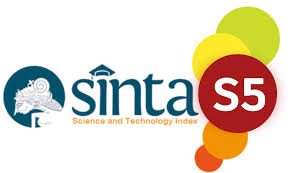The Influence of Self-Directed Dialog Toward Students' Speaking Ability in SMAN 20 BATAM
DOI:
https://doi.org/10.37253/iallteach.v6i1.10005Keywords:
Self-directed Dialogue, Speaking Ability, InfluenceAbstract
This study aimed to determine the influence of self-directed discourse on students' speaking abilities in SMAN 20 BATAM. The self-directed dialogue technique is a practice that integrates practical ways to communicate or contextual practice with simulations. Self-directed dialogue encourages students to use their words to create discourse; group learning can do this, but the guiding idea is that learning is the responsibility of the individual students. Students feel more comfortable explaining why they want to develop by using their own language because it is more relatable to them. One method that can help students become better speakers is self-directed dialogue. Speaking skills are divided into four categories: fluency, vocabulary, grammar, and pronunciation. A one-group pre- and post-test design was employed in the pre-experimental method by the researchers, this four-week study involved four meetings, including treatment. 46 students in Phase-F (the eleventh class) of Brilliant were the samples that were collected. Speaking rubrics were used to collect the data, which SPSS v26 was then used to process. According to the study's findings, students’ development scores on average were 38.89 on the pre-test and 65.39 on the post-test. The statistical data indicates that the null hypothesis is rejected and the alternative hypothesis is accepted, as indicated by the significance value of the t-test (0,000 < 0,05). Based on the results, the researcher draws the conclusion that Phase-F students at SMAN 20 BATAM can enhance their speaking abilities by introducing self-directed discourse. This suggests that students' speaking abilities can be enhanced through self-directed dialogue in an effective and significant way.
Downloads
References
Aminatun, D., & Oktaviani, L. (n.d.). The 3rd IICLLTLC 2019 The 3rd Indonesian International Conference on Linguistics, Language Teaching, Literature and Culture USING “MEMRISE” TO BOOST ENGLISH FOR BUSINESS VOCABULARY MASTERY: STUDENTS’ VIEWPOINT. www.Memrise.com
de Uso, A., Publicación, Y., Guerrero, C., & Lisbeth, J. (n.d.). UNIVERSIDAD TÉCNICA DEL NORTE BIBLIOTECA UNIVERSITARIA.
Educational Research. (n.d.).
Fadillah, S., & Syarifuddin, S. (2022). THE INFLUENCE OF SELF-DIRECTED DIALOGUE TOWARDS THE SPEAKING ABILITY STUDENTS’. In Agustus (Vol. 1, Issue 2).
Fadillah, S., Hudriati, A., Syarifuddin, S., & Natsir Ede, M. (n.d.). THE USE OF WORD MAPPING GAME TO IMPROVE STUDENTS’ VOCABULARY MASTERY AT MTs NURUL JIHAD SAOHIRING. http:/jurnal.fs.umi.ac.id
He, B. (2020). Research on the Autonomous Learning Mode of College English via the Internet in the Epidemic Situation.
Liu, C., Wang, P., Xu, J., Li, Z., & Ye, J. (2019). Automatic dialogue summary generation for customer service. Proceedings of the ACM SIGKDD International Conference on Knowledge Discovery and Data Mining, 1957–1965. https://doi.org/10.1145/3292500.3330683
Nasution, S. S., & Sukmawati, N. N. (2019). Model United Nations: Improving the Students’ Speaking Skill. JEES (Journal of English Educators Society), 4(2), 47–52. https://doi.org/10.21070/jees.v4i2.2100
Ning, H. K., & Downing, K. (2012). Influence of student learning experience on academic performance: The mediator and moderator effects of self-regulation and motivation. British Educational Research Journal, 38(2), 219–237. https://doi.org/10.1080/01411926.2010.538468
Nova, M., & Ariawan, S. (2022). THE IMPLEMENTATION OF SELF-DIRECTED DIALOGUE TO IMPROVE STUDENTS’ SPEAKING ABILITY. International Journal of English and Applied Linguistics, 2.
Pratama, M. S., & Rita, F. (2018). The Influence of Self-Directed Dialogue To the Second Grade Students’ Speaking Ability. E-Journal of English Language Teaching (ELTS), 4(1), 1–7.
Sari, L. N., & Irwan, D. (2023). THE INFLUENCE OF SELF-DIRECTED DIALOGUE TECHNIQUE TOWARDS STUDENT’S SPEAKING ABILITY. In Education Insights Journal (Vol. 1, Issue 2). https://educationinsights.org/index.php/eijournal
Servant-Miklos, V., & Noordegraaf-Eelens, L. (2021). Toward social-transformative education: an ontological critique of self-directed learning. Critical Studies in Education, 62(2), 147–163. https://doi.org/10.1080/17508487.2019.1577284
Sudirman, E. P., Assiddiq, M. A., Kalimantan, E., & Utara, N. (2021). INTERNATIONAL JOURNAL OF MULTI SCIENCE INCREASING THE FIRST YEAR STUDENTS’ SPEAKING ABILITY BY USING. 2(5), 1–11.
Watkins, S. (2019). Learners’ Perceptions of Benefits in a Self-Directed Teletandem Course: An Approach to Encourage EFL Learners to Use English Outside the Classroom. Asian EFL Journal, 23(4), 4–29..
Yulianti, R., Miftakh, F., Fitriyana, W., & Singaperbangsa Karawang, U. (n.d.). Undergraduate Students’ Perspective On Self-Directed Learning in Speaking Skill. Jurnal Pendidikan Bahasa, 8(2), 2021.




.png)






